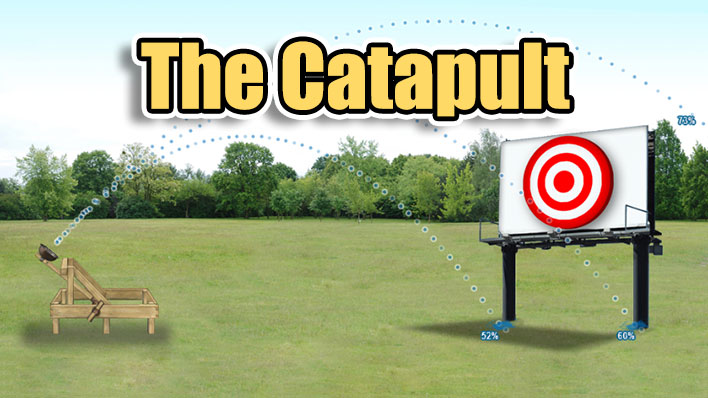Minds On
Potential and kinetic energy
Energy is all around us and it exists in many forms. But what is energy?
Energy is the ability to do work.
A simpler explanation is that energy is how things move and change.
Energy comes from all sorts of sources, such as the sun, wind, fuel, and the muscles inside our bodies. Energy in the universe is a fixed amount, meaning that we can’t create new energy, nor can we destroy energy, but we can alter or change it.
Whenever we use energy or store energy, it is either called potential or kinetic energy.
Press ‘Definitions’ to access the meaning of potential and kinetic energy.
Potential energy
This can be defined as energy “at rest.” Some examples of potential energy include a stretched elastic/spring or a rock at the top of a mountain. There is possibility or potential for energy to be used.
Kinetic energy
This is considered “moving energy.” Some examples of kinetic energy use include walking and swimming.
Sort the energies!
Review the following descriptions of different examples of energy.
Action
Forms of energy

A diagram of the different types of energy. In the center of the diagram are the words “forms of energy.” Arrows point out to mechanical energy such as a moving car, thermal energy such as boiling water, radiant energy such as sunlight, electrical energy such as lightning and power lines, chemical energy such as food people eat and striking a match, and gravitational energy as shown through the design of a rollercoaster.
Forms of energy
Potential and kinetic energy can be converted into each other and there are several types of energy that are either potential or kinetic. Some examples include:
- Mechanical energy
- Thermal energy
- Electromagnetic energy
- Electrical energy
- Chemical energy
- Gravitational energy
Scientists have come up with rules or laws that we can use to better understand these things. Many others before them have understood the same principles from their observations. These rules are then used in experiments to learn more about the world.
One example of such a rule is called the Law of Conservation of Energy. This law says that the amount of energy in a system never changes. No new energy is created, and no old energy is destroyed. Instead, energy is converted from one form to another.
Explore the following accordion to learn more about the different forms of energies and how some can be converted from one form to another.

Mechanical energy is the energy that is stored in objects allowing the object to do work or move, change shape or position. For example, a crane has mechanical energy that allows it to lift objects.
Other examples of mechanical energy are simple machines. Simple machines have energy stored and to do work someone would use force to move it. In this way, mechanical energy is the combination of potential energy (mechanical energy stored) and kinetic energy (force moving the object).
Explore the following animation. What does each character do to move their simple machine?
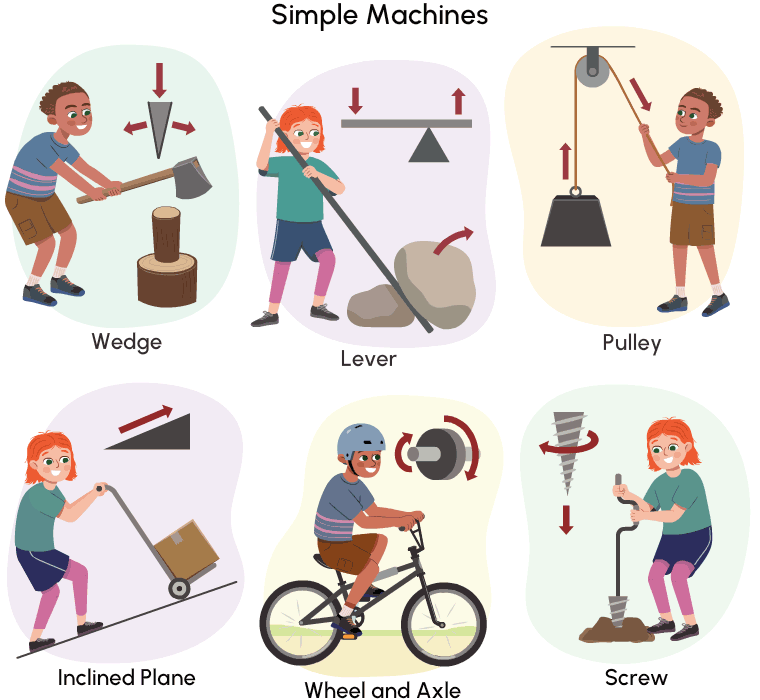
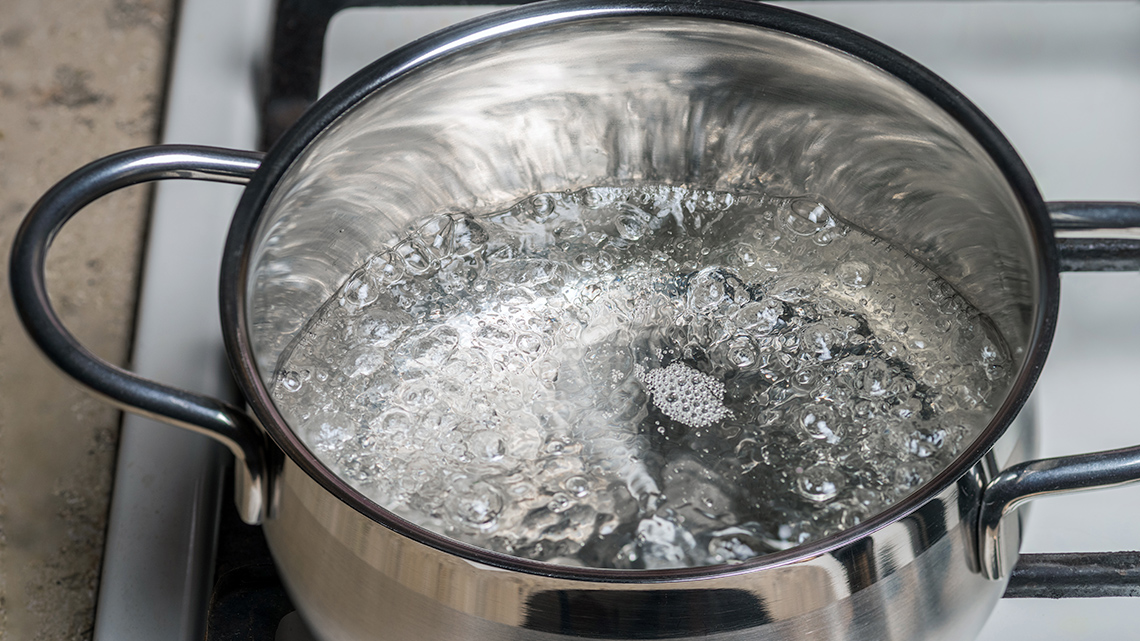
A pot of boiling water is an example of thermal energy. When the water is heated, the temperature increases and makes the water molecules move faster and bump into each other. The hotter the water, the faster the molecules move and the higher its thermal energy.
Explore the following animation. As the water boils, it also changes the water from liquid form to gas. What would happen if someone turned up the heat of the stove?
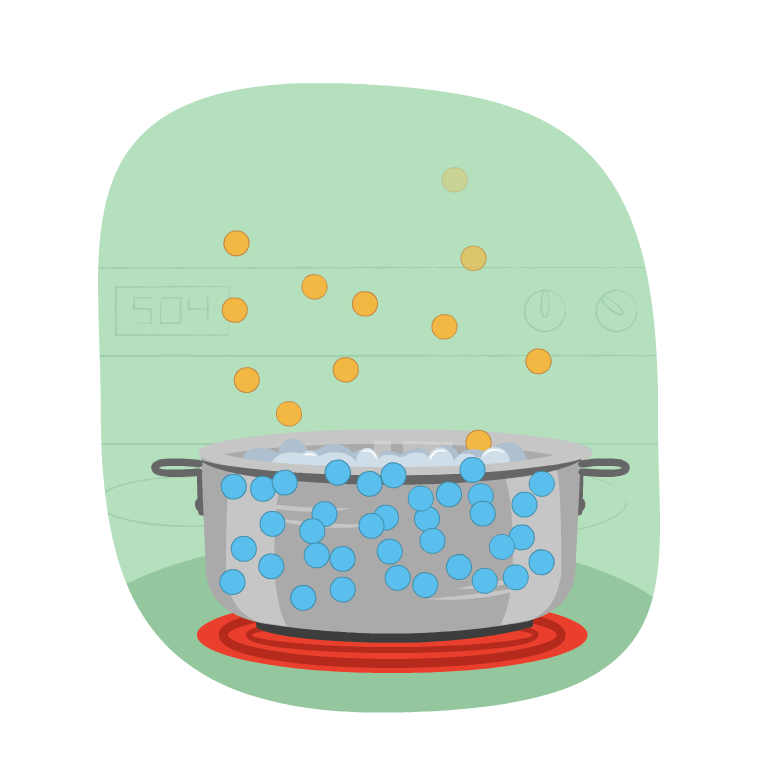
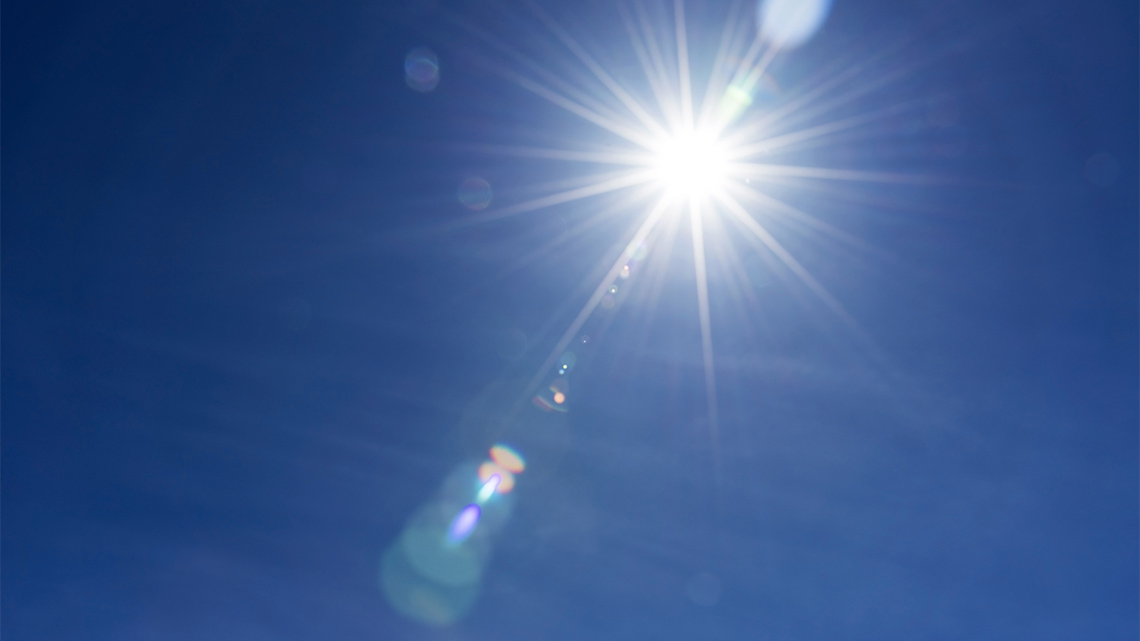
Radiant energy is the energy of electromagnetic waves. Electromagnetic waves can travel through space in the form of radiant energy, radio waves, x-rays etc.
The sun creates radiant energy which is transferred to Earth.
Plants convert sunlight chemical energy for food through photosynthesis. Explore the following animation. What else do you notice that helps the tomato plant grow?
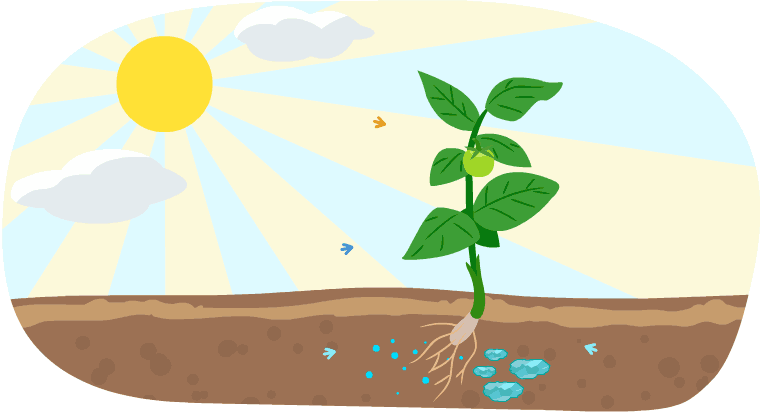
The sun shining in the sky as a plant is growing. The following parts are labelled, sunlight, carbon dioxide, water, minerals, plant sugars and oxygen.

Electric energy is created by moving electrons. The faster the charges move, the more electrical energy. Energy towers connect to power lines which carry electrical energy to different areas and power different appliances, light and systems in homes, offices, stores etc.
During a thunderstorm lightning is an example of electrical energy in nature. Electrical energy is classified as a type of kinetic energy.
Explore the following video. What would happen if there was a greater buildup of electric energy? How would it change the storm?

A match contains stored chemical energy. When it is struck, the chemical energy is released and then converted into thermal energy and light energy.
Another type of chemical energy is stored in the different types of food we eat. Once the food enters the body, a chemical reaction happens and chemical energy is released and transformed to keep us warm, help us grown and help us move around.
Explore the following animation. What happens to the pieces of food when it enters the stomach?


Gravitational energy is the energy that is stored in a object according to its height above the Earth. Gravitational energy is the energy that is connected to gravity. Gravity is the force that holds everything close to the Earth. It was what keeps people, trees, water, animals, buildings on the ground. It is also what makes an object fall when you pick it up and drop it.
A roller coaster design uses our understanding of gravitational energy. The higher the roller coaster off the ground, the more gravitational energy it has and the change in the design helps the roller coaster move faster. As the roller coaster moves the gravitational energy converts to movement.
Another example we can use to identify how gravitational energy is converted to movement (kinetic energy) and back is a pendulum. Explore the following image. What do you notice about the movement of a pendulum?

An image of a pendulum swinging which is a line with a ball at the end. There is a line with a ball on the left, in the middle, and on the right. On the left underneath the ball, it says: Highest point of swing, No kinetic energy. Maximum gravitational (potential) energy. In the middle underneath the ball it says Maximum kinetic energy, Minimum gravitational (potential) energy. On the right underneath the ball it says: Highest point of swing, No kinetic energy. Maximum gravitational (potential) energy.
Access this video to see a pendulum in action.
The dissipation of energy

Two images of a car. In the first image the car is being filled with gasoline. The text in the image states that with conversion, chemical energy turns to mechanical energy. In the second image, the car is on the road and there are wavy lines exiting the hood of the car. The text in the image states that with dissipation, chemical energy turns to heat energy plus sound energy.
Energy cannot be created or destroyed - it can only be converted from one form to another. Sometimes this conversion is used to do work we intend, other times it is released, or dissipated, into the environment. This is called the Law of Conservation of Energy.
In the example of a car powered by gasoline there is both conversion and dissipation.
Conversion: Gasoline contains stored chemical energy. When the gasoline is burned in the car engine, it is turned to mechanical energy which helps the car to move.
Dissipation: In this process, thermal energy and sound energy are also created. These types of energy are released into the environment.
Can you think of any other examples of when energy is released into the environment?
Press ‘Hint’ to access examples of when energy is released into the environment.
Examples of energy being released into the environment include:
- A lightbulb: electrical energy produces heat energy that is released
- A washing machine: electrical energy produces heat and sound energy that is released
Energy transfer
Think about the human body as a small “system” – a person receives energy from eating. The body uses a chemical process to extract the energy from the food, so the food contains chemical energy. This chemical energy is then transferred to heat energy to keep a person warm and converted to kinetic energy when you move around.
Just like the human body, the system of planet Earth also operates on energy transfers. This means that there will always be the same amount of energy present on Earth – it will just be transferred into different types of energy.
Experimenting with the Law of Conservation

It’s time to explore the Law of Conservation in action!
We will be exploring the example of a trebuchet. A trebuchet is a type of catapult and is used to propel objects from one point to another.
The Trebuchet
Explore the following video clip from Science Max, where he teaches us how to build a trebuchet. Consider what you have learned about forms of energy, the law of conservation of energy, and dissipation of energy.
As you explore the clip, consider the following questions and use a method of your choice to record your answers.
What kind of simple machine does Science Max use to build the trebuchet?
Press ‘Possible Answer’ to access what simple machine is used.
Science Max uses a lever to build a trebuchet.
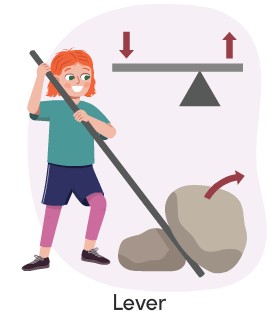 Description
Description
A person holding a pole between two rocks. When they pull down on the pole, the rock furthest away lifts up. A diagram of a horizontal block of wood with a pendulum in the middle. There is an arrow pointing down on one side of the pendulum and an arrow pointing up on the other side of the pendulum.
What kind of energy does a trebuchet use?
Press ‘Possible Answer’ to access the kind of energy.
A trebuchet uses gravitational energy. When the weight at one end of the lever falls because of gravity, the other end of the lever is raised and releases the object.
How does the of law of conservation of energy work in this experiment?
Press ‘Possible Answer’ to access how the law of conservation works in this experiment.
A trebuchet uses gravitational energy and converts this into mechanical energy.
Do you think there is energy that might be released as the trebuchet springs forward? If so, explain your thinking.
Science MAX
What happens when Science Max creates a trebuchet on a larger scale? Explore the following clip to find out.
What were some of the challenges that Science Max and his friend faced when testing their large trebuchet?
How did they improve their design to find a solution?
Record your responses using a method of your choice.
Consolidation
Energy in a daily routine

Three activities being shown. The first image shows a scientist boiling eggs. There are arrows pointing from the element on the stove to the bottom of the pot. There is also toast in a toaster with arrows pointing from the coils in the toaster to the toast. In the second image the scientist is eating a sandwich. Arrows are pointing from their stomach to other areas of their body. In the third image the scientist is driving a car. There are wavy arrows pointing from the hood of the car into the air as the car is moving.
Imagine the types of tasks and activities that might be in someone’s daily routine. As they go about their daily routine:
- Energy is being used
- Energy is being converted from one form to another
- Energy is being released into the environment
For example, someone might wake up and
- make breakfast
- eat breakfast
- drive a car or take public transit to work
Consider the example above and explain how what type of energy is stored or being used, the forms of energy converted and the forms of energy that is released into the environment.
Complete the Energy Chart in your notebook or using the following fillable and printable document. If you would like, you can use speech-to-text or audio recording tools to record your thoughts.

|
|
Forms of Energy: |
|
Energy Converted: |
|
Energy Released: |

|
|
Forms of Energy: |
|
Energy Converted: |
|
Energy Released: |

|
|
Forms of Energy: |
|
Energy Converted: |
|
Energy Released: |
Press the ‘Activity’ button to access Energy Chart.
Think about it!
Was there anything you learned that surprised you?
What would you like to learn more about, and why?
Consider how you would explain the law of conservation to a partner. What information could you provide? What kind of example might you share?
Reflection
As you read through these descriptions, which sentence best describes how you are feeling about your understanding of this learning activity? Press the button that is beside this sentence.
I feel…
Now, record your ideas using a voice recorder, speech-to-text, or writing tool.
Press ‘Discover More’ to extend your skills.
Discover MoreYou can also try using a trebuchet to hit a target virtually through the Science Max game “The Catapult!”
